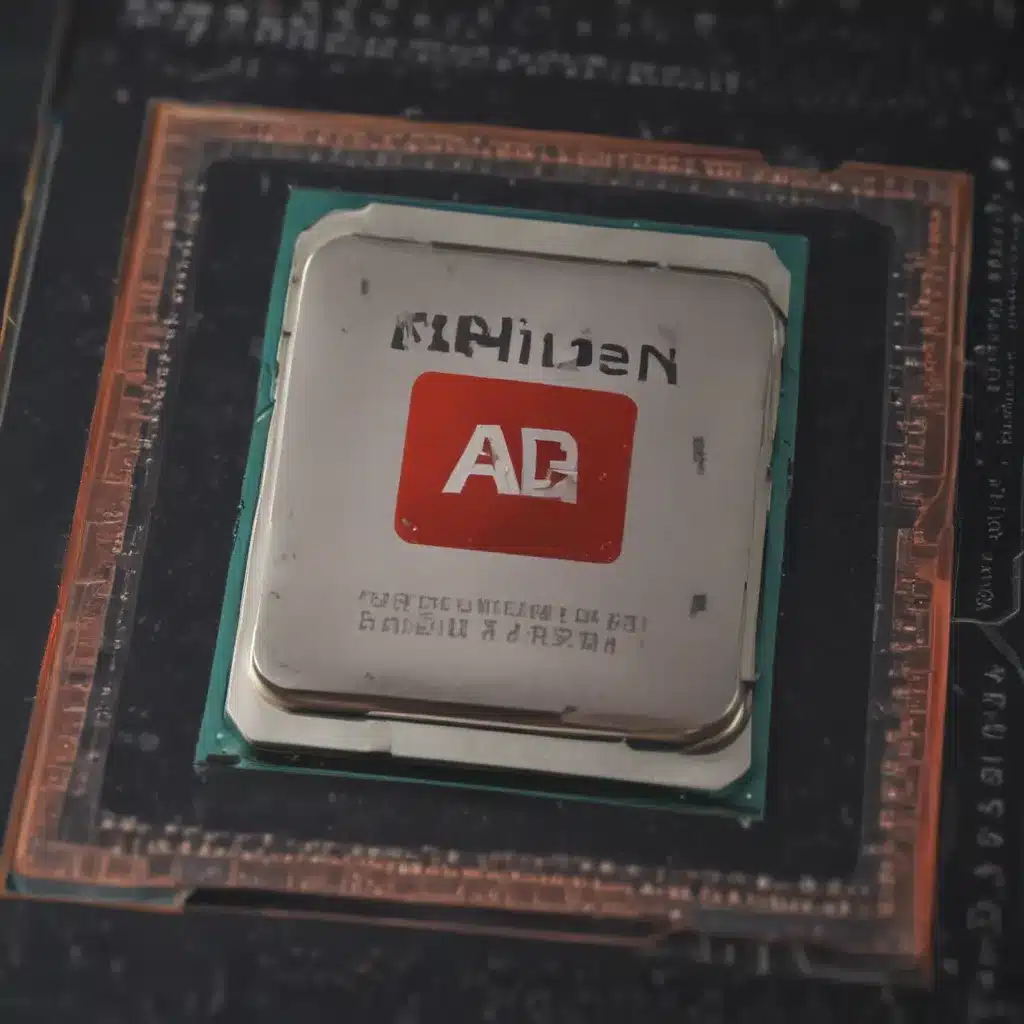The Rise of Chiplets
Ah, the curious case of chiplets – the unsung heroes of modern computing. While these diminutive wonders have been around for decades, they’ve recently taken the tech world by storm, with everyone from AMD to Intel scrambling to incorporate them into their latest and greatest CPU designs. And let me tell you, these tiny titans are about to shake up the industry in a big way.
You see, for the longest time, the conventional wisdom in the semiconductor world was that bigger was better. The more transistors you could cram onto a single silicon wafer, the more powerful your processor would be. But as we’ve pushed the boundaries of Moore’s Law, things have started to get a bit, well, messy. Cramming more and more transistors into an ever-shrinking space has led to all sorts of challenges, from heat dissipation to manufacturing yield issues.
Enter the humble chiplet – a revolutionary approach that’s turning the traditional CPU design on its head. Instead of a monolithic slab of silicon, chiplets allow engineers to break down a processor into smaller, modular components that can be designed, tested, and manufactured separately, then assembled into a complete package. [1] It’s like building a custom LEGO set, but with cutting-edge semiconductor technology.
The Advantages of Chiplet Design
The benefits of this modular approach are numerous. For one, it allows chip designers to mix and match different manufacturing processes and technologies, rather than being stuck with a one-size-fits-all approach. [2] So you might have a blazing-fast 5nm chiplet handling the heavy lifting, while more mundane tasks are offloaded to a more power-efficient 12nm or 14nm chiplet. It’s a bit like having a Ferrari engine for your sports car, but a Prius-style hybrid system for your daily commute.
But the real magic of chiplets lies in their scalability. By breaking down a processor into smaller, independent components, designers can easily add or remove features as needed, without having to completely redesign the entire chip. [3] Want more cores? Just pop in another CPU chiplet. Need more memory bandwidth? Slot in a high-performance memory chiplet. It’s a level of flexibility that simply wasn’t possible with the old monolithic approach.
And let’s not forget about the manufacturing benefits. Smaller chiplets are generally easier to produce, with higher yields and lower defect rates. [1] That means more chips per wafer, and ultimately, more bang for your buck. It’s a win-win for both chip designers and consumers.
Standardizing the Chiplet Revolution
Of course, as with any revolutionary technology, there are challenges to overcome. One of the biggest hurdles has been the lack of a unified standard for how these chiplets should communicate and interact with each other. [2] Imagine trying to build a custom PC if every component used a different type of connectors and protocols – it would be a nightmare.
That’s where industry groups like the Universal Chiplet Interconnect Express (UCIe) consortium come in. [2] By establishing a common set of standards for die-to-die interconnects, they’re paving the way for a true chiplet ecosystem, where components from different manufacturers can be mixed and matched seamlessly. It’s a bit like the USB revolution, but for the inner workings of our beloved CPUs.
And the best part? This standardization effort isn’t just limited to the big players like AMD, Intel, and Arm. [2] No, it’s a collaborative effort that’s bringing together the entire semiconductor industry, including foundries like TSMC and Samsung. That means we’re not just looking at the future of AMD or Intel chips – we’re witnessing the dawn of a new era in processor design that could benefit everyone, from budget-conscious gamers to data center behemoths.
The Chiplet-Powered Future
So, what does this chiplet revolution mean for the future of computing? Well, buckle up, my friends, because the sky’s the limit. [4] As chiplet technology continues to mature, we’re going to see an explosion of innovation and specialization, with processors tailor-made for everything from edge computing to quantum computing.
Imagine a world where your laptop’s processor is a perfect blend of high-performance cores for gaming and content creation, coupled with energy-efficient cores for basic productivity tasks and background processes. [3] Or picture a server farm packed with modular, customized chiplet-based CPUs, each one optimized for a specific workload, whether it’s machine learning, data analytics, or scientific simulations.
And let’s not forget about the implications for the humble PC repair shop. [5] With the rise of chiplets, the days of having to replace an entire motherboard or CPU just to get a little more oomph under the hood might be coming to an end. [6] Instead, technicians could simply swap out individual chiplets, upgrading specific components as needed, without having to disassemble the whole system.
It’s an exciting time to be a tech enthusiast, that’s for sure. The future of computing is being rewritten one chiplet at a time, and I, for one, can’t wait to see what the next few years have in store. So, grab your soldering iron and get ready to dive into the fascinating world of AMD’s chiplet-powered CPUs. The revolution is just getting started!













